Influence of the Dielectric Coating of the Outer Side of the Cathode in the Anode–Cathode Pairs of a Molecular Electronic Sensitive Element on the Conversion Coefficient
Abstract
1. Introduction
2. Materials and Methods
3. Results
4. Discussion
Author Contributions
Funding
Acknowledgments
Conflicts of Interest
References
- Sun, Z.; Agafonov, V.M. 3D numerical simulation of the pressure-driven flow in a four-electrode rectangular micro-electrochemical accelerometer. Sens. Actuators B Chem. 2010, 146, 231–238. [Google Scholar] [CrossRef]
- Agafonov, V.; Shabalina, A.; Ma, D.; Krishtop, V. Modeling and experimental study of convective noise in electrochemical planar sensitive element of MET motion sensor. Sens. Actuators A: Phys. 2019, 293, 259–268. [Google Scholar] [CrossRef]
- Chen, D.; Li, G.; Wang, J.; Chen, J.; He, W.; Fan, Y.; Deng, T.; Wang, P. A micro electrochemical seismic sensor based on MEMS technologies. Sens. Actuators A: Phys. 2013, 202, 85–89. [Google Scholar] [CrossRef]
- Qi, W.; Xu, C.; Liu, B.; She, X.; Liang, T.; Chen, D.; Wang, J.; Chen, J. MEMS-Based Electrochemical Seismometer with a Sensing Unit Integrating Four Electrodes. Micromachines 2021, 12, 699. [Google Scholar] [CrossRef] [PubMed]
- Liu, Y.; Liu, C.; Tao, C.; Yao, H.; Qiu, L.; Wang, A.; Ruan, A.; Wang, H.; Zhou, J.; Li, H.; et al. Time correction of the ocean bottom seismometers deployed at the southwest Indian ridge using ambient noise cross-correlation. Acta Oceanol. Sin. 2018, 37, 39–46. [Google Scholar] [CrossRef]
- Presnov, D.A.; Sobisevich, A.L.; Gruzdev, P.D.; Ignatiev, V.I.; Kon’kov, A.I.; Moreev, A.Y.; Tarasov, A.V.; Shuvalov, A.A.; Shurup, A.S. Tomographic Estimation of Waterbody Parameters in the Presence of Ice Cover Using Seismoacoustic Sources. Acoust. Phys. 2019, 65, 593–602. [Google Scholar] [CrossRef]
- Sobisevich, A.L.; Presnov, D.A.; Agafonov, V.M.; Sobisevich, L.E. New-Generation Autonomous Geohydroacoustic Ice Buoy. Seism. Instruments 2018, 54, 677–681. [Google Scholar] [CrossRef]
- Liu, C.; Hua, Q.; Pei, Y.; Yang, T.; Xia, S.; Xue, M.; Le, B.M.; Huo, D.; Liu, F.; Huang, H. Passive-source ocean bottom seismograph (OBS) array experiment in South China Sea and data quality analyses. Chin. Sci. Bull. 2014, 59, 4524–4535. [Google Scholar] [CrossRef]
- Kostylev, D.V.; Bogomolov, L.M.; Boginskaya, N.V. About seismic observations on Sakhalin with the use of molecular- electronic seismic sensors of new type About seismic observations on Sakhalin with the use of molecular-electronic seismic sensors of new type. In Proceedings of the IOP Conference Series: Earth and Environmental Science, Bogor, Indonesia, 29 August 2019. [Google Scholar]
- Koulakov, I.; Jaxybulatov, K.; Shapiro, N.; Abkadyrov, I.; Deev, E.; Jakovlev, A.; Kuznetsov, P.; Gordeev, E.; Chebrov, V. Asymmetric caldera-related structures in the area of the Avacha group of volcanoes in Kamchatka as revealed by ambient noise tomography and deep seismic sounding. J. Volcanol. Geotherm. Res. 2014, 285, 36–46. [Google Scholar] [CrossRef]
- Antonovskaya, G.N.; Kapustian, N.K.; Moshkunov, A.I.; Danilov, A.V. New seismic array solution for earthquake observations and hydropower plant health monitoring. J. Seism. 2017, 168, 71–1053. [Google Scholar] [CrossRef]
- Levchenko, D.G.; Kuzin, I.P.; Safonov, M.V.; Sychikov, V.N.; Ulomov, I.V.; Kholopov, B.V. Experience in seismic signal recording using broadband electrochemical seismic sensors. Seism. Instrum. 2010, 46, 250–264. [Google Scholar] [CrossRef]
- Gorbenko, V.I.; Zhostkov, R.A.; Likhodeev, D.; Presnov, D.A.; Sobisevich, A.L. Feasibility of using molecular-electronic seismometers in passive seismic prospecting: Deep structure of the Kaluga ring structure from microseismic sounding. Seism. Instrum. 2017, 53, 181–191. [Google Scholar] [CrossRef]
- Zaitsev, D.; Agafonov, V.; Egorov, E.; Avdyukhina, S. Broadband MET Hydrophone. In Proceedings of the 80th EAGE Conference and Exhibition 2018, Copenhagen, Denmark, 11–14 June 2018. [Google Scholar]
- Egorov, I.V.; Shabalina, A.S.; Agafonov, V.M. Design and Self-Noise of MET Closed-Loop Seismic Accelerometers. IEEE Sens. J. 2017, 17, 2008–2014. [Google Scholar] [CrossRef]
- Antonov, A.; Shabalina, A.; Razin, A.; Avdyukhina, S.; Egorov, I.; Agafonov, V. Low-Frequency Seismic Node Based on Molecular-Electronic Transfer Sensors for Marine and Transition Zone Exploration. J. Atmos. Ocean. Technol. 2017, 34, 1743–1748. [Google Scholar] [CrossRef]
- Chen, L.; Sun, Z.; Li, G.; Chen, D.; Wang, J.; Chen, J. A Monolithic Electrochemical Micro Seismic Sensor Capable of Monitoring Three-Dimensional Vibrations. Sensors 2018, 18, 1047. [Google Scholar] [CrossRef]
- Deng, T.; Chen, D.; Chen, J.; Sun, Z.; Li, G.; Wang, J. Microelectromechanical Systems-Based Electrochemical Seismic Sensors With Insulating Spacers Integrated Electrodes for Planetary Exploration. IEEE Sens. J. 2016, 16, 650–653. [Google Scholar] [CrossRef]
- Xu, C.; Wang, J.; Chen, D.; Chen, J.; Qi, W.; Liu, B.; She, X.; Liang, T. The Design and Fabrication of the High Integrated Sensitive Electrodes by Adopting the Anodic Bonding Technology for the Electrochemical Seismic Sensors. In Proceedings of the 2021 IEEE 34th International Conference on Micro Electro Mechanical Systems (MEMS), Online, 25–29 January 2021; pp. 378–381. [Google Scholar]
- Krishtop, V.G.; Zhevnenko, D.A.; Gornev, E.G.; Vergeles, A.S.; Bugaev, A.S.; Popov, V.G.; Dudkin, P.V.; Kohanovsky, S.V.; Krishtop, T.V. Technology and application o f electrochemical motion sensors. Adv. Mater. Proc. 2019, 4, 3. [Google Scholar] [CrossRef]
- Krishtop, V.G.; Agafonov, V.; Bugaev, A.S. Technological principles of motion parameter transducers based on mass and charge transport in electrochemical microsystems. Russ. J. Electrochem. 2012, 48, 746–755. [Google Scholar] [CrossRef]
- Huang, H.; Carande, B.; Tang, R.; Oiler, J.; Dmitriy, Z.; Vadim, A.; Yu, H. Development of a micro seismometer based on molecular electronic transducer technology for planetary exploration. In Proceedings of the 2013 IEEE 26th International Conference on Micro Electro Mechanical Systems (MEMS), Taipei, Taiwan, 20–23 January 2013; pp. 629–632. [Google Scholar] [CrossRef]
- Li, G.; Chen, D.; Wang, J.; Jian, C.; He, W.; Fan, Y.; Deng, T. A MEMS based Seismic Sensor using the Electrochemical Approach. Procedia Eng. 2012, 47, 362–365. [Google Scholar] [CrossRef][Green Version]
- Deng, T.; Chen, D.Y.; Wang, J.B.; Chen, J.; He, W.T.; Fan, Y.J. A MEMS based electrochemical seismic sensor. In Proceedings of the 17th International Conference on Solid-State Sensors, Actuators and Microsystems (TRANSDUCERS & EUROSENSORS XXVII), Barcelona, Spain, 16–20 June 2013; pp. 920–923. [Google Scholar]
- Lu, B. Thick film hybrid technology for automotive applications. In Proceedings of the 2010 5th International Microsystems Packaging Assembly and Circuits Technology Conference, Taipei, Taiwan, 20–22 October 2010; pp. 1–34. [Google Scholar]
- Arya, V.; Steinhauser, B.; Gruebel, B.; Schmiga, C.; Bay, N.; Brunner, D.; Passig, M.; Brand, A.A.; Kluska, S.; Nekarda, J. Laser Ablation and Ni/Cu Plating Approach for Tunnel Oxide Passivated Contacts Solar Cells with Variate Polysilicon Layer Thickness: Gains and Possibilities in Comparison to Screen Printing. Phys. Status Solidi 2020, 217, 2000474. [Google Scholar] [CrossRef]
- Stefano, J.S.; Orzari, L.O.; Silva-Neto, H.A.; de Ataíde, V.N.; Mendes, L.F.; Coltro, W.K.T.; da Paixão, T.R.L.C.; Janegitz, B.C. Different approaches for fabrication of low-cost electrochemical sensors. Curr. Opin. Electrochem. 2021, 32, 100893. [Google Scholar] [CrossRef]
- Narazaki, A.; Takada, H.; Yoshitomi, D.; Torizuka, K.; Kobayashi, Y. Ultrafast laser processing of ceramics: Comprehensive survey of laser parameters. J. Laser Appl. 2021, 33, 012009. [Google Scholar] [CrossRef]
- Gruner, A.; Schille, J.; Loeschner, U. High repetition frequency micro hole drilling of metal foils using ultrashort pulse laser radiation. In Laser-Based Micro-and Nanoprocessing XII; International Society for Optics and Photonics: Bellingham, WA, USA, 2018. [Google Scholar]
- Corund Ceramics Supplier ‘Polycor’. Available online: https://www.polikor.net/ (accessed on 30 December 2021).
- Screen Print Pastes ‘Depa’. Available online: www.depa.ru (accessed on 30 December 2021).
- Havskov, J.; Alguacil, G. Chapter 10. Calibration and testing. In Instrumentation in Earthquake Seismology; Series Modern Approaches in Geophysics; Springer: Berlin/Heidelberg, Germany, 2010; Volume 22, pp. 277–307. [Google Scholar]
- Qi, W.; Liu, B.; Liang, T.; Chen, J.; Chen, D.; Wang, J. MEMS-Based Integrated Triaxial Electrochemical Seismometer. Micromachines 2021, 12, 1156. [Google Scholar] [CrossRef]
- Xu, C.; Wang, J.; Chen, D.; Chena, J.; Liu, B.; Qi, W.; Liang, T.; She, X. The MEMS-Based Electrochemical Seismic Sensor With Integrated Sensitive Electrodes by Adopting Anodic Bonding Technology. IEEE Sens. J. 2021, 21, 19833–19839. [Google Scholar] [CrossRef]
- Egorov, E.V.; Egorov, I.V.; Agafonov, V. Self-Noise of the MET Angular Motion Seismic Sensors. J. Sens. 2015, 2015, 512645. [Google Scholar] [CrossRef]
- Agafonov, V.; Kompaniets, I.; Liu, B.; Chen, J. Modeling of the Electrochemical Motion Sensor Conversion Factor at High Frequencies. Micromachines 2022, 13, 153. [Google Scholar] [CrossRef]
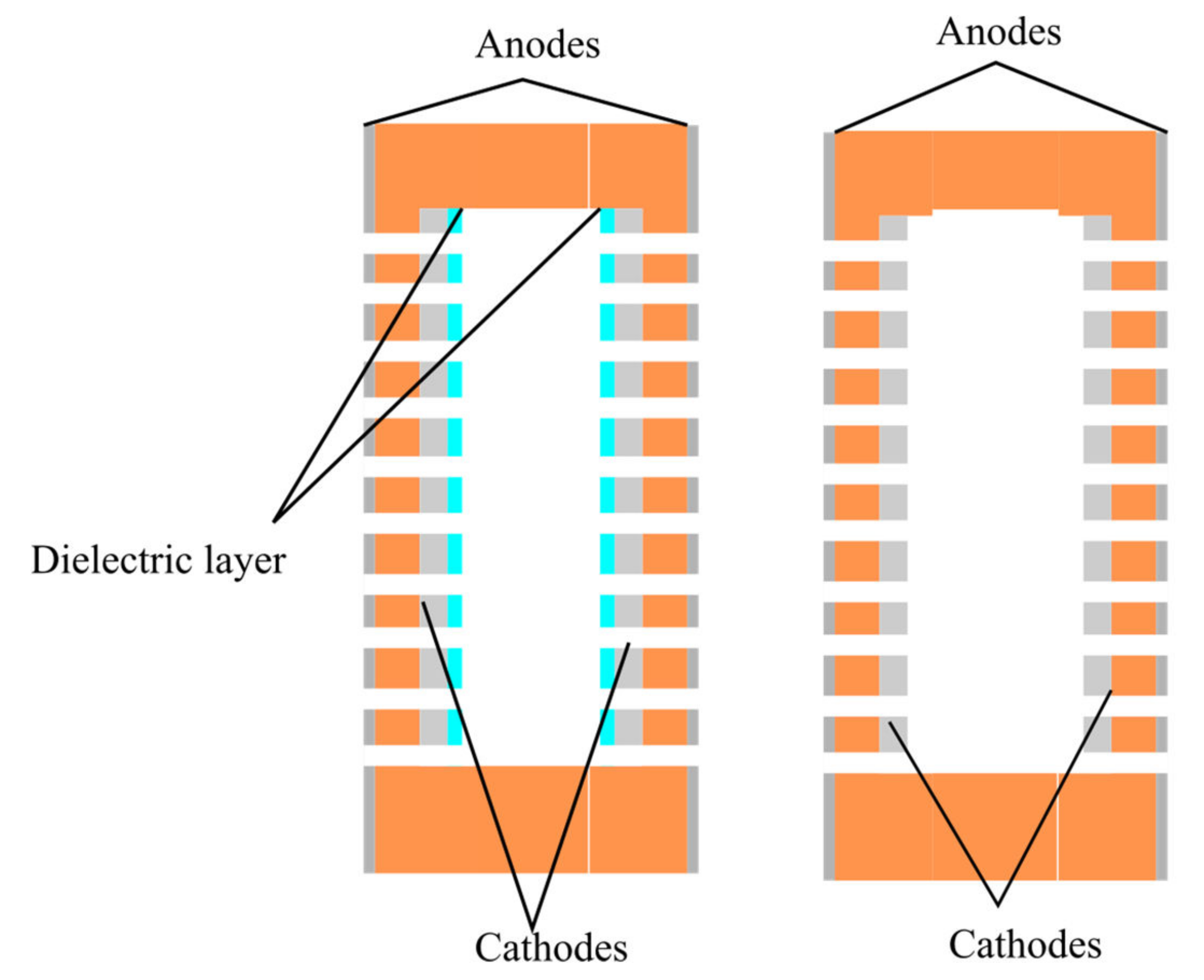
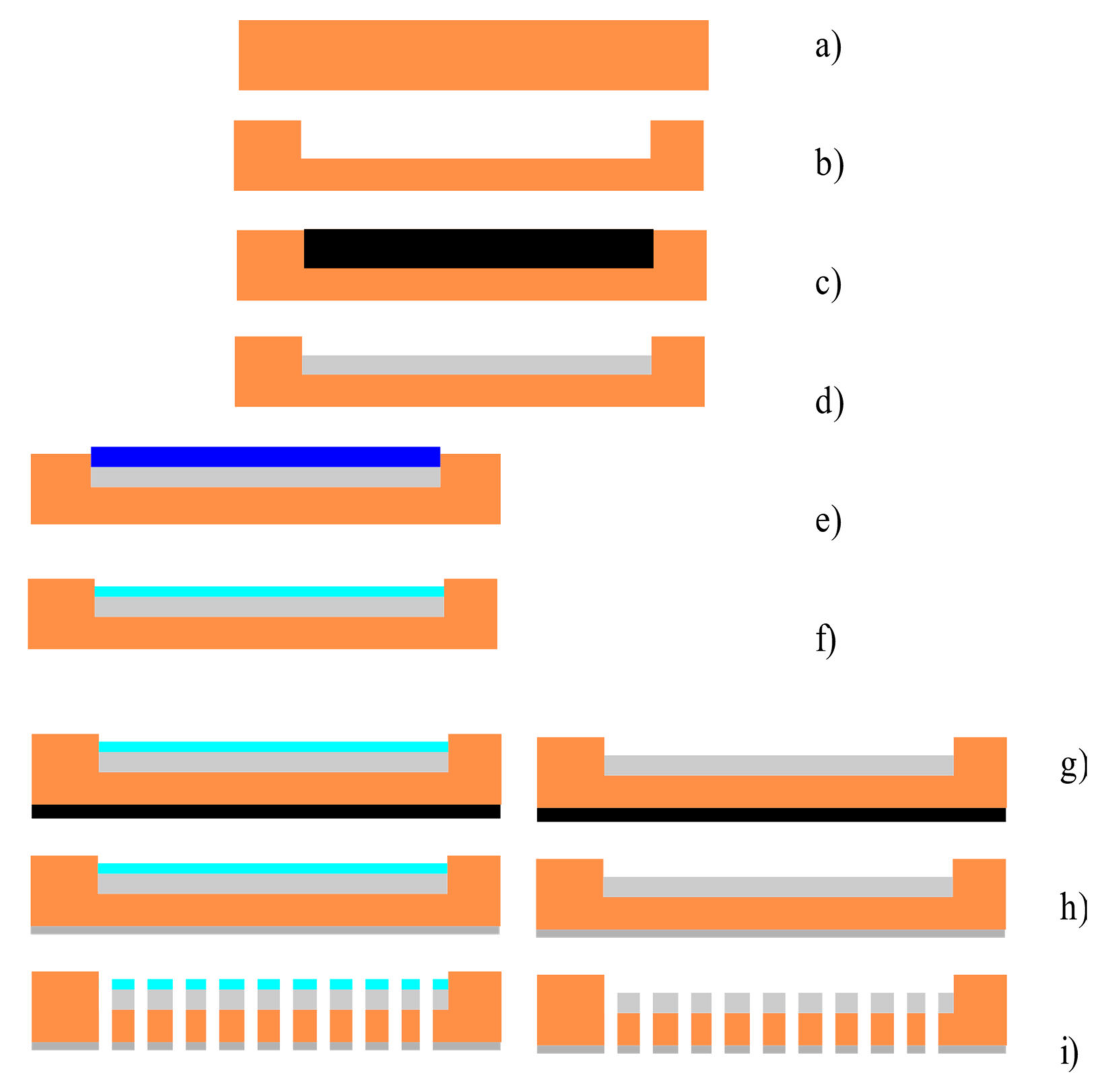

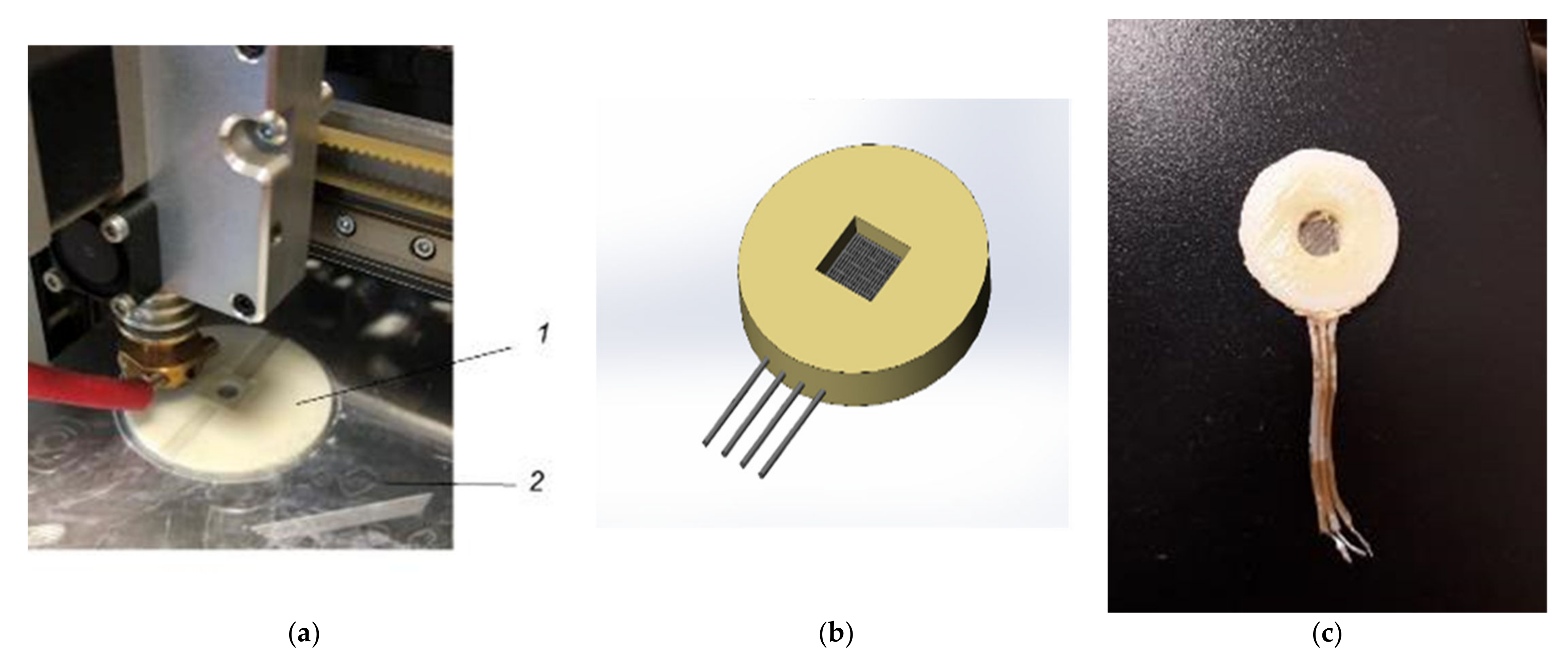
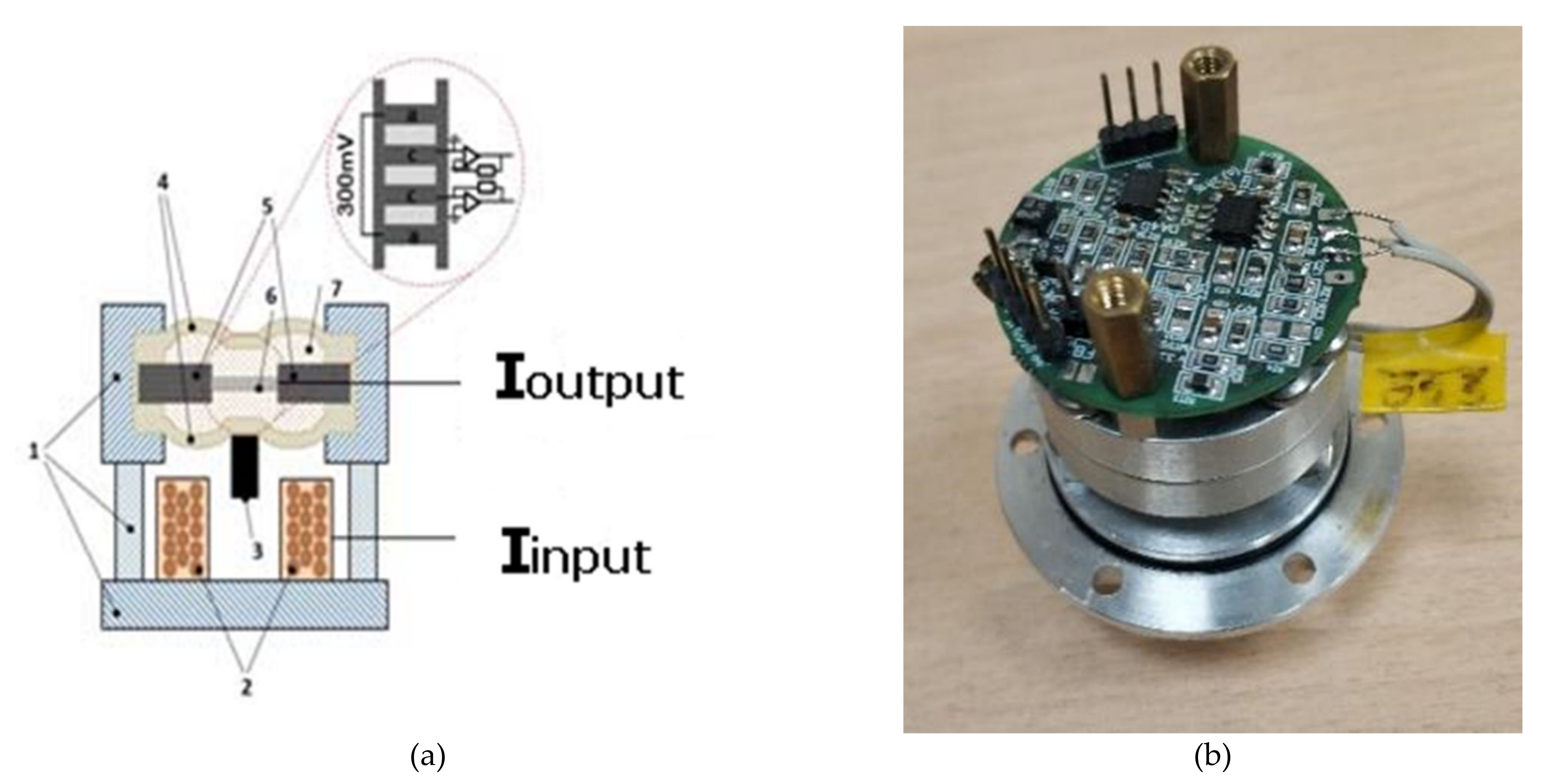
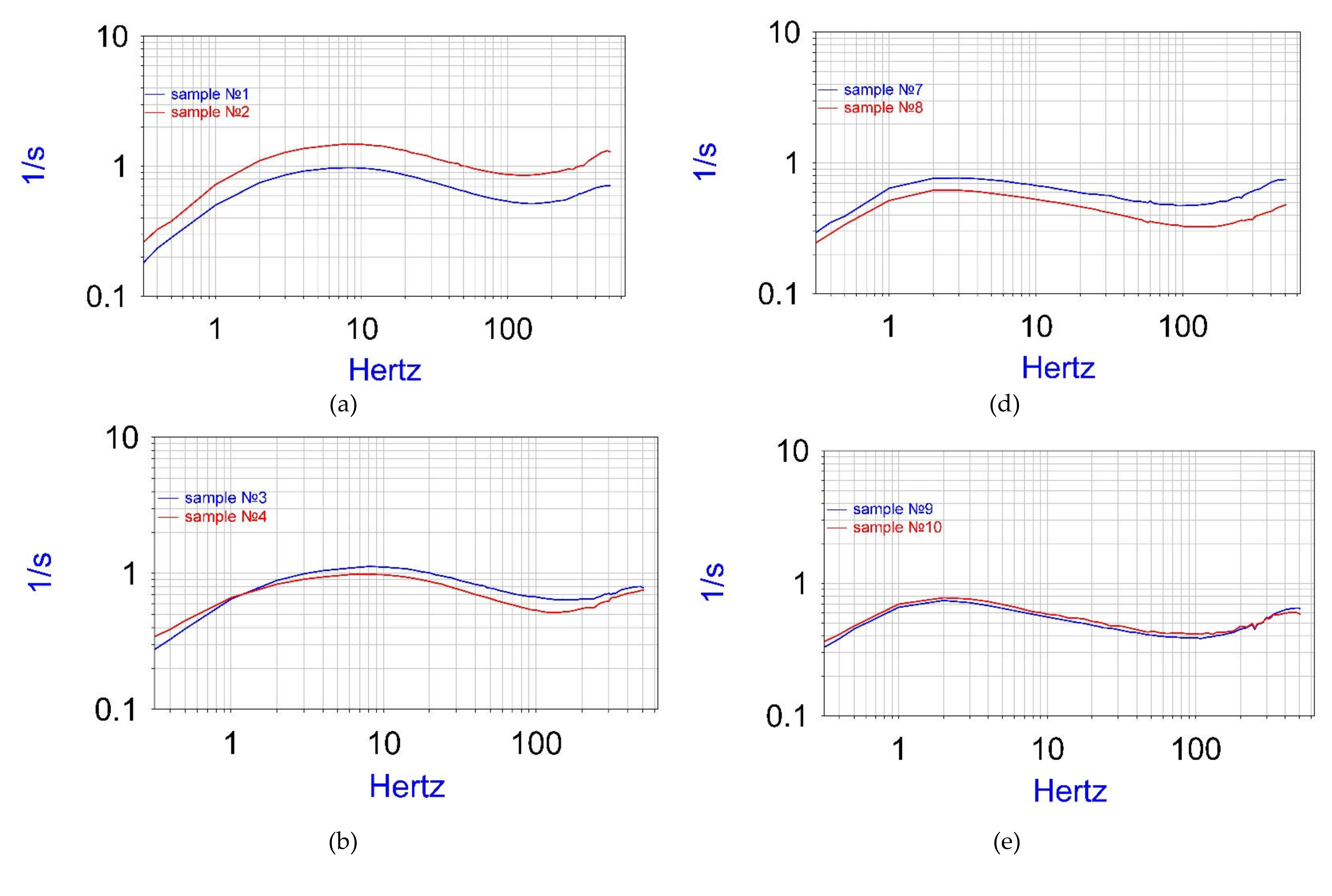
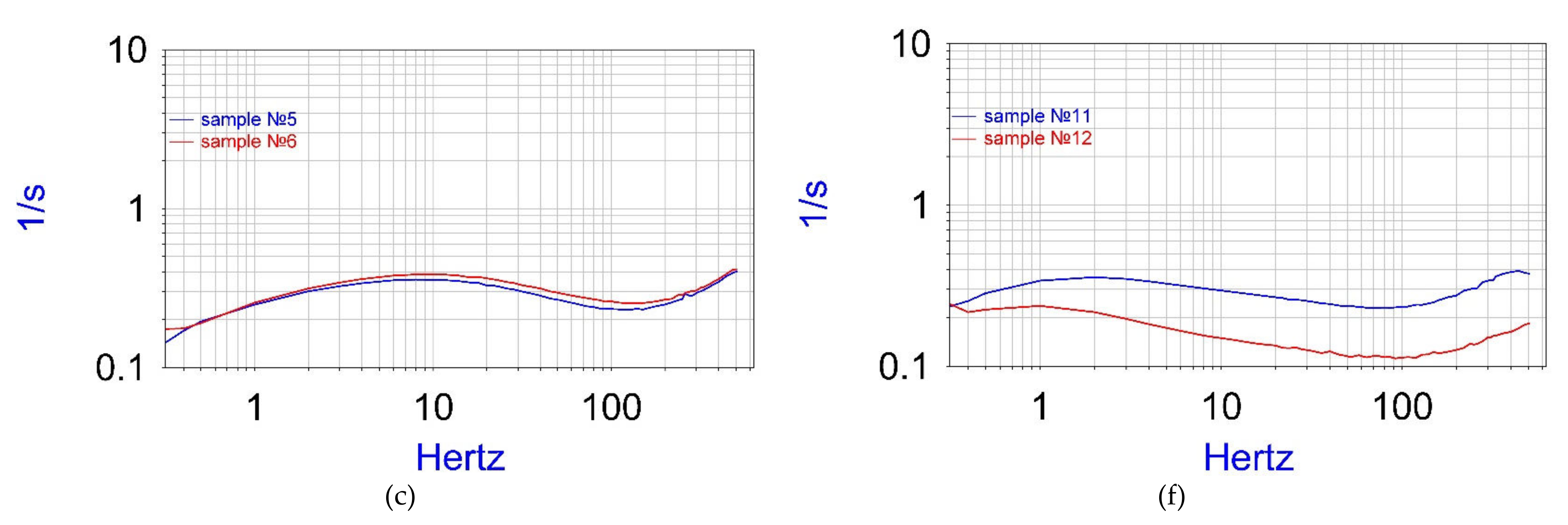

| Sample ID | Option | Number of Holes | Central Plate Thickness, µm | Average Background Current, µA | Conversion Coefficient Measured at 8 Hz W(8) | Conversion Coefficient Measured at 0.32 Hz W(0.32) | Normalized Conversion Coefficient W(8)/W(0.32) |
|---|---|---|---|---|---|---|---|
| 1 | 1 | 2500 | 150 | 84 | 0.98 | 0.18 | 5.44 |
| 2 | 1 | 2500 | 150 | 89 | 1.42 | 0.26 | 5.46 |
| 3 | 1 | 1600 | 150 | 59 | 1.13 | 0.29 | 3.88 |
| 4 | 1 | 1600 | 150 | 60 | 0.99 | 0.32 | 3.09 |
| 5 | 1 | 1024 | 150 | 25 | 0.36 | 0.15 | 2.40 |
| 6 | 1 | 1024 | 150 | 26 | 0.38 | 0.14 | 2.71 |
| 7 | 2 | 2500 | 150 | 59 | 0.69 | 0.37 | 1.86 |
| 8 | 2 | 2500 | 150 | 61 | 0.55 | 0.28 | 1.96 |
| 9 | 2 | 1600 | 150 | 62 | 0.59 | 0.33 | 1.79 |
| 10 | 2 | 1600 | 150 | 59 | 0.60 | 0.36 | 1.69 |
| 11 | 2 | 1024 | 150 | 29 | 0.30 | 0.25 | 1.20 |
| 12 | 2 | 1024 | 150 | 31 | 0.18 | 0.24 | 0.75 |
Publisher’s Note: MDPI stays neutral with regard to jurisdictional claims in published maps and institutional affiliations. |
© 2022 by the authors. Licensee MDPI, Basel, Switzerland. This article is an open access article distributed under the terms and conditions of the Creative Commons Attribution (CC BY) license (https://creativecommons.org/licenses/by/4.0/).
Share and Cite
Bugaev, A.; Agafonova, V.; Egorov, I.; Agafonova, E.; Avdyukhina, S. Influence of the Dielectric Coating of the Outer Side of the Cathode in the Anode–Cathode Pairs of a Molecular Electronic Sensitive Element on the Conversion Coefficient. Micromachines 2022, 13, 360. https://doi.org/10.3390/mi13030360
Bugaev A, Agafonova V, Egorov I, Agafonova E, Avdyukhina S. Influence of the Dielectric Coating of the Outer Side of the Cathode in the Anode–Cathode Pairs of a Molecular Electronic Sensitive Element on the Conversion Coefficient. Micromachines. 2022; 13(3):360. https://doi.org/10.3390/mi13030360
Chicago/Turabian StyleBugaev, Alexander, Victoria Agafonova, Ivan Egorov, Ekaterina Agafonova, and Svetlana Avdyukhina. 2022. "Influence of the Dielectric Coating of the Outer Side of the Cathode in the Anode–Cathode Pairs of a Molecular Electronic Sensitive Element on the Conversion Coefficient" Micromachines 13, no. 3: 360. https://doi.org/10.3390/mi13030360
APA StyleBugaev, A., Agafonova, V., Egorov, I., Agafonova, E., & Avdyukhina, S. (2022). Influence of the Dielectric Coating of the Outer Side of the Cathode in the Anode–Cathode Pairs of a Molecular Electronic Sensitive Element on the Conversion Coefficient. Micromachines, 13(3), 360. https://doi.org/10.3390/mi13030360





